The art of persian tiling and types of tiles
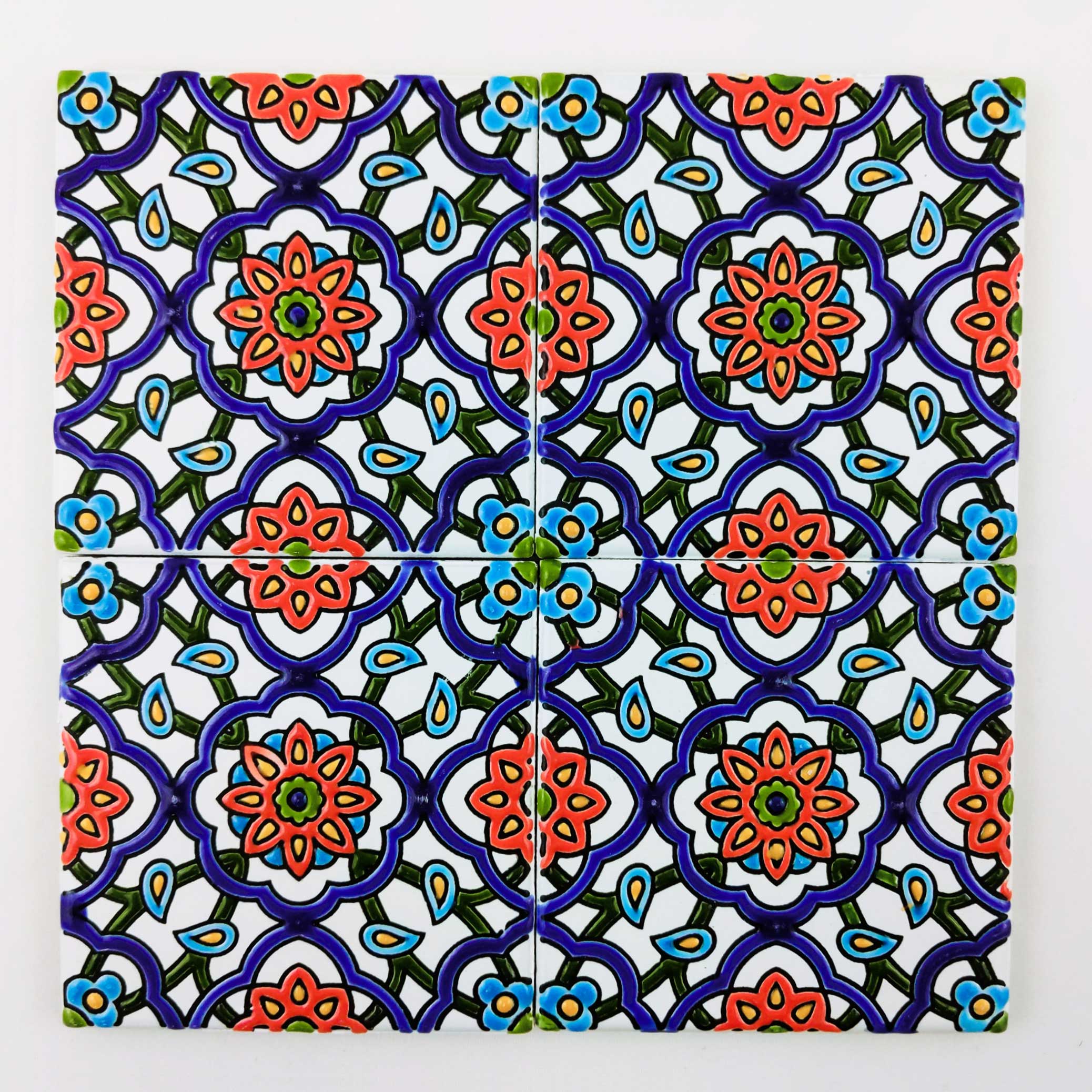
Persian Tiles is an Iranian art that reached its peak with the arrival of Islam in the land of the Persians and the creation of the Iranian-Islamic architectural style. Tiling is hard and tedious, but it is an persian art whose amazing results are manifested in various types of mosaics, seven colors, Moqali and Mogharnas.
Tiling is the fifth most basic method in decorating a building, which is still one of the most beautiful and, of course, the most expensive decorations. The art of tiling in Iran reached its peak with the advent of Islam, Iranian architecture that was implemented in Islamic places without tiling would certainly not have been saved.
The beauty of many places in Iran and the world is due to the decoration of tiles, a combination of clay, persian gemstone and other materials that are made, baked and glazed in six stages to show a spectacular design and role. There are different types of tiles, each of which has its own beauty and appearance. In the following, we will introduce some of the most famous types of tiles:
Mosaic tiling
The most beautiful and difficult tile model is the mosaic, which can be performed only by great masters. In this type of tiling, different pieces of tiles are cut and worked together to create a so-called beautiful fabric of the tile. Tile mosaic work became popular from the fourth century AH during the Seljuk rule and reached perfection in the eighth century. In this century, different sections and shapes of tiles became smaller, and artistic designs were created.
Mosaic tile is done in several steps, first, the master draws the desired design and paints it carefully. The design is then numbered and segmented, after which the designs are arranged on paper and sorted by color. The cut paper is glued to the tile with the desired color using my hair.
Once the glued paper is completely dry, they start cutting the tile pieces with an ax, which is called “lipstick”. After cutting and polishing the Persian Tiles, it is time to put them together according to the numbering of the tile pieces. Finally, mortar and tile installation will be done on the desired location. This model of tiling requires very high precision and requires a lot of effort.
Mosaic tiling has been used in many landmarks, the Safavids were also very interested in this model of tiling and this decoration reached its peak during this period. Sheikh Lotfollah Mosque, Abbasi Mosque, Abbasi Caravanserai, Kaboud Mosque in Tabriz, and parts of Niavaran Palace are among the buildings where the highest example of mosaic tiles can be seen.
Color Week Tiling
In this method, tiles with regular shapes and dimensions are placed side by side with square, rectangular and hexagonal shapes according to the master’s taste and the characteristics of the workplace. In this type of tiling, the design is first copied from paper onto the tile using charcoal, then painted and the tile is placed in the oven. Black, white, azure, Firoozeh Koobi, red, yellow and fawn are the seven common colors used in seven-color tiling.
Glazed tiles or seven-color Persian Tiles from the Achaemenid historical period were seen in ancient buildings, but they have never been used seriously and extensively in buildings. Until the Seljuk historical period, colored tiles found their place in the decoration of important buildings and became one of the most influential parts of the building.
This model of tiling is faster than mosaic and seven-color tiling can be seen more in religious places. After the spread of Islam, this model of tiling can be seen in abundance in mosques, especially minarets. The minaret of Chaharbagh school in Isfahan is one of the buildings where a beautiful and high example of seven-color or brick Persian Tiles can be seen.
Mental tile
Putting together very small Persian Tiles, which are usually square or rectangular in shape, is a sensible tile. Moqeli style is actually a combination of tiling and brick, which minimizes the host of expansion and contraction of the tiles, and as a result, little damage is done to the tile glaze. In Moqeli tiles, a variety of straight lines are used in vertical and horizontal axes, as well as sometimes diagonal lines with a 45 degree angle and checkered.
Moqelli tiling is also called masonry because this tile is decorated with the Kufic script of the building and has been used in various levels of architectural decorations. This line was not used in writing, but it was used a lot in architecture; In this way, first the text was marked on a checkered page and then the letters were arranged. In the final stage, bricks and Persian Tiles were installed on the building to form the letters and make the writing visible.
Although this type of tiling was invented by the Iranians before the advent of Islam, it was perfected during the Islamic era and in the fifth century AH. Moqelli tiling can be seen well in the buildings left from the Timurid and patriarchal eras, this type of decoration can be seen even in contemporary works such as the shrine of Imam Reza and Imamzadeh Saleh. In the Isfahan Grand Mosque and Ali Mosque, there are inscriptions in the style of Moqeli.
Mogharnas Tile:
Mogharnas has a very important place in Iranian-Islamic architecture, in general, what is in the form of ladders and steps and like pendants like a lamp is called Mogharnas. Mogharnas was compared to the snout of a deer, and its roots are also known from the base and cornice of the Greeks. Mogharnas used to have a construction aspect, but over time it took on a decorative aspect and was used in most of the entrances to important buildings, including mosques and markets.
Mogharnas is a type of decoration that depends on various materials such as tiles and plaster. This decoration is available in four types: forward moorings, stacked mohawks, suspended mohawks and honeycomb mohawks. In each type, first, using plaster, bricks and lime, the design is made and the cuts and chandeliers are made according to the desired shape, and then the Persian Tiles made to fit the building are glued to it. These Persian Tiles can be seven types of tiles, mosaics, etc.
Mogharnas has been called one of the most important pillars of Islamic architecture because it extends in the Islamic regions from east to south of Spain and can be seen as an Iranian element and many Islamic buildings. The exact date of the invention of Mogharnas and its masters is not known, but the most beautiful Mogharnas can be seen in Safavid architecture and in the Naghsh Jahan Square complex and the Abbasi Grand Mosque.
Lattice Tiling
As its name implies, lattice tiling is a type of tiling in which the tile becomes a grid; So that light can pass through it. Among the architectural works and buildings left from the past, such as bazaars, baths and mosques, there is a curtain or a net of pottery or Persian Tiles, which according to some researchers of the changing climate of Iran, bright sun, wind, storm, tornado and special national ideas. And religion has created such networks.
The windows made of lattice Persian Tiles have expelled pests, kept the house private and allowed light to pass through easily. The lattice tile is made in two types of molds and cuts, and the method is such that the glazed pottery is cut based on the original design and then the original design is made by putting them together.
The lattices of Sheikh Lotfollah Grand Mosque, the tomb of Jafar Isfahani and the tomb of Sheikh Safi al-Din Ardabili are among the most beautiful examples of lattice tiles.






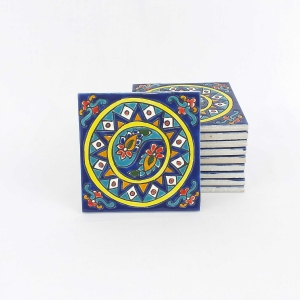
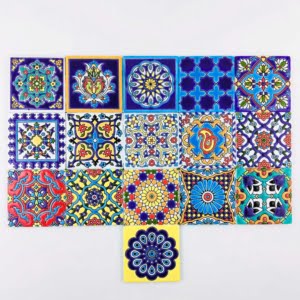
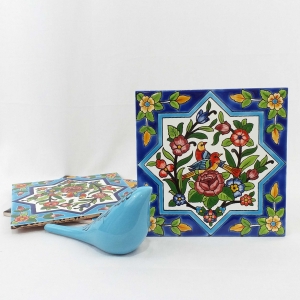
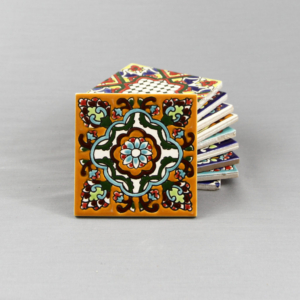
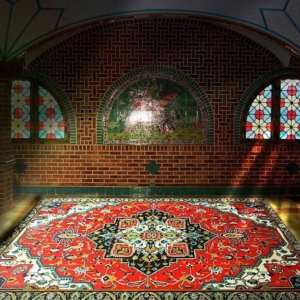
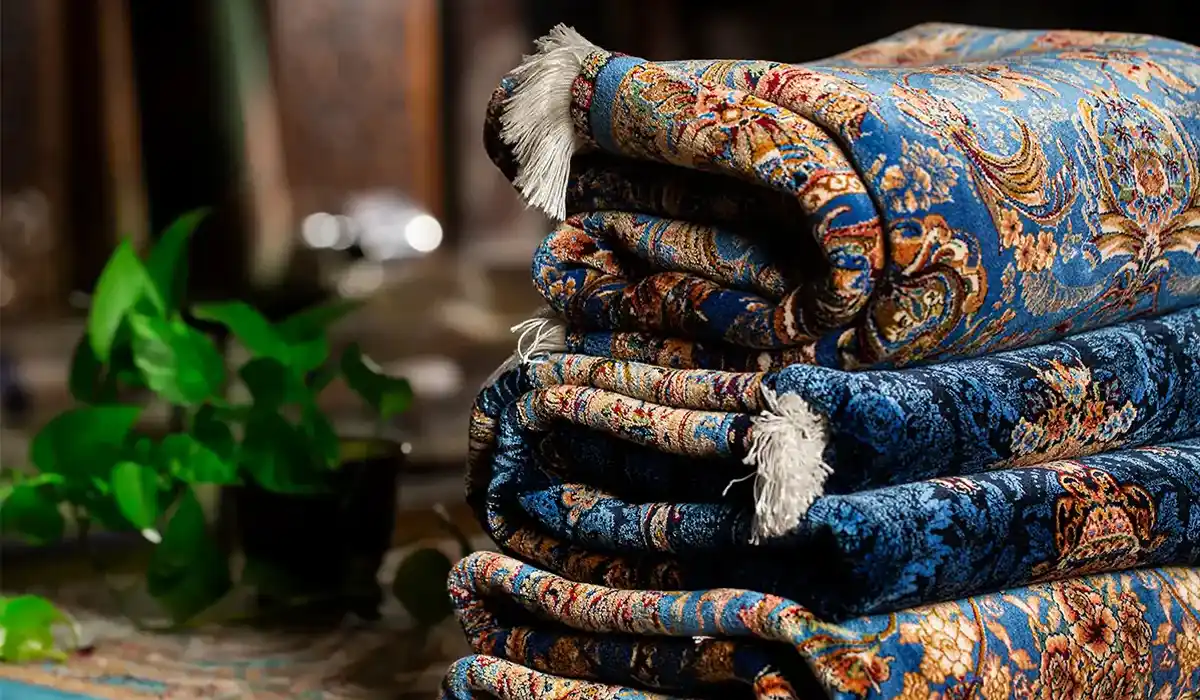
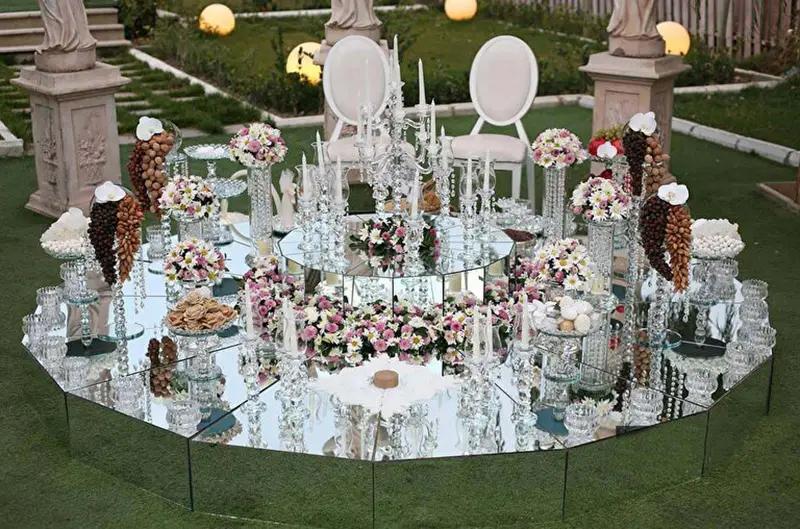
Comments